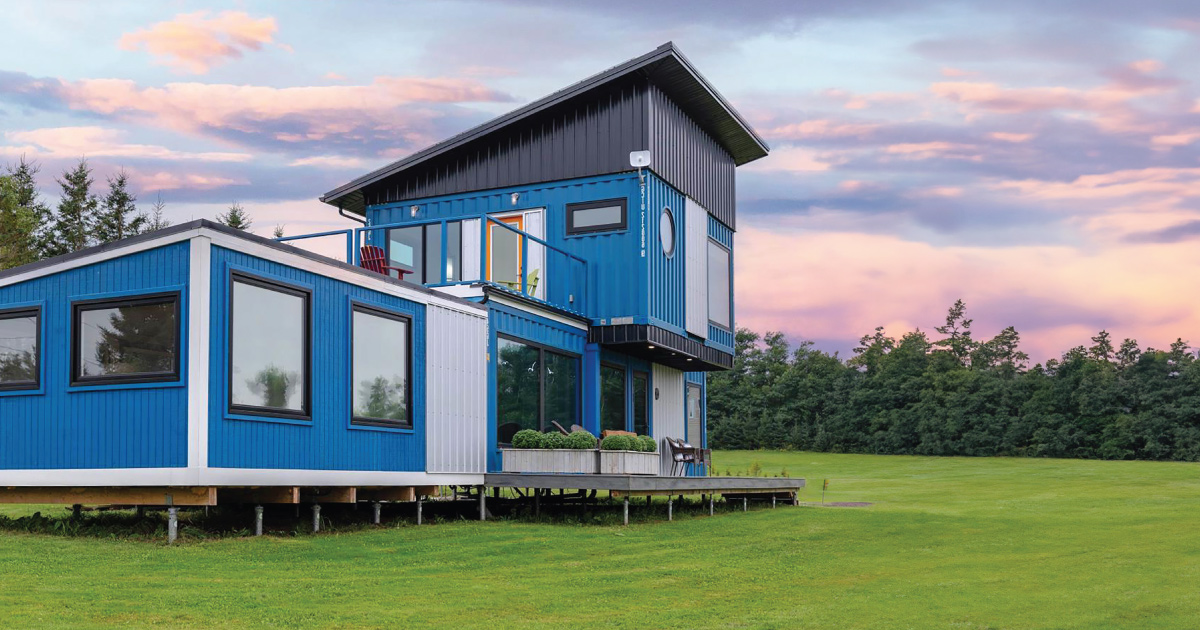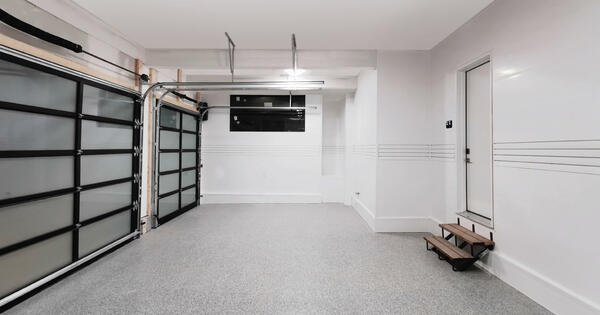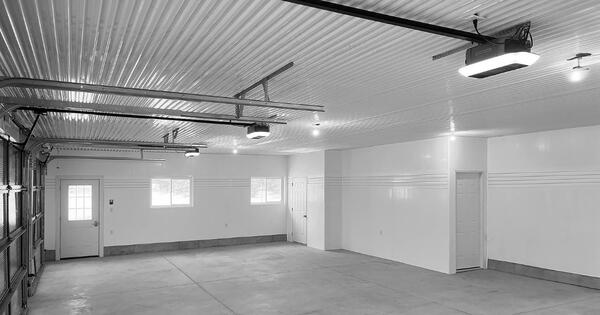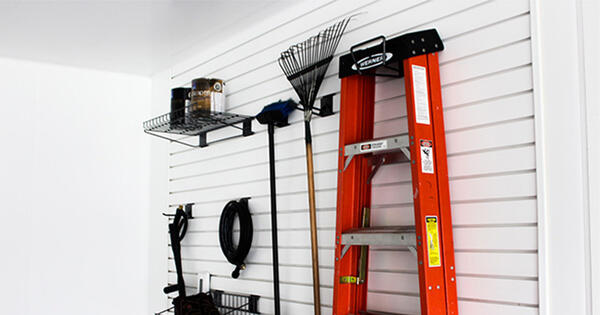This blog post is the final part of a three-part series on accessory dwelling units. Read part one and part two here.
Building accessory dwelling units (ADUs) that are affordable and durable is possible, but thoughtful design and careful material selection are key. In the third and final part of this series (check out parts one and two here), let’s break down some popular materials you can use in your ADU, ensuring it’s a long-lasting unit that’s comfortable to live in.
Exterior Building Materials for ADUs
Exterior materials for an ADU need to not only withstand the elements, but also look good. After all, no one wants an eyesore on their property.


Structural Framing
Choosing the right structural framing for your ADU is crucial for ensuring stability, durability, and efficiency. Here are three top options to consider:
- Steel is strong, durable, and makes an excellent choice for the structural frame of your ADU. It allows for flexible and open designs, and its corrosion resistance ensures longevity with minimal maintenance. Steel frames are best suited in areas with high moisture or frequent seismic activity, but it might be costlier up front when compared to other materials.
- Laminated Veneer Lumber (LVL) combines wood strength with enhanced stability, providing a reliable and cost-effective option for ADU frames. LVL's consistent properties reduce the risk of warping or shrinking, offering stability over time. It's also environmentally friendly, appealing to eco-conscious builders. LVL is preferable for ADU framing in regions with moderate climates and fluctuating humidity levels. It’s also a great option when cost effectiveness is a priority.
- Structural Insulated Panels (SIPs) excel in energy efficiency and rapid construction. Comprising an insulating foam core between two rigid panels, SIPs create a well-insulated and airtight envelope, reducing heating and cooling costs. Their prefabricated nature speeds up the building process, making them a time-efficient choice. SIPs are best for framing when energy efficiency and quick construction are among your top concerns.
Exterior Walls
The exterior walls of your ADU play a vital role in insulation, durability, and aesthetics. Here are four materials to consider for your project:
- Insulated Concrete Forms (ICFs) provide superior insulation and structural strength for ADU exterior walls. The interlocking foam forms create a continuous insulated barrier, enhancing energy efficiency. The concrete core also makes it more durable and resistant to extreme weather conditions.
- Fiber cement siding is a durable and low-maintenance option for ADU exteriors, composed of cement, sand, and cellulose fibers. It resists pests, fire, and rot, and its versatility in design makes it aesthetically pleasing and long-lasting.
- Wood and metal cladding offers a customizable and visually appealing finish for ADU exteriors. Wood cladding provides a natural and warm aesthetic, while metal cladding offers modernity and durability. Both materials are versatile, allowing for various design options, suitable for different architectural styles.
- Exterior Insulation and Finish Systems (EIFS) enhance insulation and aesthetics for ADU walls. Consisting of an insulating layer, reinforced mesh, and a decorative finish, EIFS creates a continuous thermal barrier, improving energy efficiency. Its lightweight nature allows for design flexibility, and the finish options provide an attractive appearance for the exterior.
Roofing Material
Roofing materials cover and protect the top surface of an ADU, providing weatherproofing and insulation against environmental elements like UV rays, wind, rain, and snow:
- Metal roofing offers durability, longevity, and low maintenance for ADUs. Its resistance to harsh weather conditions makes it a practical choice. Additionally, metal roofs are lightweight, allowing for easier installation and reducing the structural load on the ADU – this is especially important if you’re transporting a prefabricated ADU from a factory to its forever home.
- Asphalt shingles are a cost-effective and widely used roofing material for ADUs. They are easy to install, versatile in design, and provide adequate protection against the elements. With a range of colors and styles available, asphalt shingles can complement various architectural aesthetics.
- Green roofs, or living roofs, present an environmentally friendly option for ADU roofs. The vegetation layer provides insulation, reduces energy consumption, and mitigates stormwater runoff. Green roofs contribute to improved air quality, biodiversity, and aesthetic appeal.
Windows and Doors
Windows and doors allow light, ventilation, and access to an ADU and play a critical role in a unit’s overall energy efficiency:
- Energy-efficient windows with low U-values and high Solar Heat Gain Coefficients (SHGC) are crucial for optimizing the thermal performance of an ADU. Low U-values indicate effective insulation, preventing heat transfer and maintaining interior comfort. High SHGC values allow for passive solar heating by maximizing the sunlight entering the space, enhancing energy efficiency, reducing heating and cooling costs, and creating a comfortable and well-lit living environment.
- Insulated exterior doors contribute to the overall energy efficiency of an ADU. The insulation helps minimize heat exchange between the interior and exterior, ensuring a consistent temperature inside. Additionally, well-insulated doors prevent drafts, reducing the load on heating and cooling systems. Beyond energy efficiency, these doors enhance security and sound insulation, providing a comfortable and secure living space in the ADU.
Interior Building Materials for ADUs
Inside an ADU, it’s important to create a comfortable, healthy, and low maintenance living environment. From the flooring underfoot to the insulation that envelops the space, every element is chosen with an eye toward everyday comfort, cleanliness, and overall well-being.



Insulation
Insulation regulates temperature within an ADU, minimizes heat loss or gain, and enhances energy efficiency to create a comfortable and cost-effective environment.
Spray foam insulation is a great choice for an ADU because of its thermal performance. When applied, the foam expands to fill gaps, cracks, and voids, creating a seamless and airtight barrier. This tight seal minimizes heat transfer, enhances energy efficiency, and reduces utility costs – this is especially important if you’re covering utility costs as part of a rental agreement. Spray foam insulation also provides superior sound insulation, moisture resistance, and contributes to a more comfortable and sustainable living environment within the ADU.
Interior Finishes
Interior finishes are the surface materials and treatments used inside an ADU, including paints, wallpapers, wall panels, and other decorative elements, and they play an important role in the aesthetic appeal and functionality of a space:
- If you’re opting for a drywalled interior, satin and semi-gloss paint finishes are a good choice because they have a smooth surface that allows for easy cleaning with a damp cloth or mild cleaning solution. They also provide a level of sheen that makes them more resistant to stains and wear compared to flat or matte finishes. Satin finishes strike a balance between durability and a subtle shine, while semi-gloss finishes offer even greater resistance to moisture and are particularly suitable for high-traffic areas or spaces prone to splashes and stains, such as kitchens and bathrooms.
- For a full-wall finish that will last longer than drywall, PVC panels like Trusscore Wall&CeilingBoard are a durable and low-maintenance alternative for ADUs. Known for their resistance to scratches, dents, moisture, and mold, PVC panels are suitable for high-traffic spaces and areas prone to humidity like bathrooms and kitchens. They’re also easy to clean, which ensures your unit walls will always look their best and can be reset to their original state with soap and water between tenants.
Flooring
Flooring is crucial in providing a durable surface within your ADU and it contributes to comfort, safety, and the overall visual appeal of the space:
- Engineered hardwood flooring combines the timeless look of real wood with added dimensional stability, making it resistant to warping and moisture. Its durable composition ensures longevity, providing an elegant and reliable flooring option.
- Laminate flooring is a cost-effective solution for ADU floors, offering easy maintenance and an array of design choices. Its versatility makes it suitable for various interior styles, and its durable construction withstands daily wear and tear, making it a practical and budget-friendly flooring option.
- Vinyl plank flooring provides a resilient and water-resistant ADU flooring solution. Its affordability, durability, and low maintenance requirements make it a popular choice, especially for spaces prone to moisture exposure. Vinyl plank flooring also comes in a variety of styles, allowing for diverse design possibilities in ADU interiors.
Building Systems and Utilities
Building systems and utilities, such as HVAC and water heaters, are essential components that manage climate control, water supply, and other vital functions to create a livable space:
- Ductless mini-split HVAC systems are an efficient choice for ADUs, providing both heating and cooling with zone control. Their compact design, easy installation, and energy efficiency make them suitable for smaller spaces, ensuring personalized comfort and reduced energy consumption.
- Radiant floor heating offers an energy-efficient and even heat distribution for ADUs. By heating the space from the floor up, radiant systems minimize heat loss and provide a comfortable environment. This method is particularly effective for smaller areas like ADUs, promoting energy efficiency and a cozy living atmosphere.
- Tankless water heaters are a space-saving and energy-efficient alternative to traditional water heaters for ADUs. They heat water on demand, eliminating the need for a storage tank, reducing standby energy losses, and providing hot water instantly.
- Energy-efficient lighting, such as LED fixtures, is crucial for ADUs, as it minimizes energy consumption while providing ample illumination. LED lights are long-lasting, produce less heat, and come in various designs, contributing to sustainability and creating a well-lit and energy-efficient interior environment in the ADU.
Before you select building materials for your ADU, it’s important to refer to your local building code to ensure your new space is safe and legal to live in. And remember, in most cases, you’ll have to meet building codes for single-family dwellings plus additional requirements that are specific to ADUs.
Read the Rest of the Series Here

PART 1: ACCESSORY DWELLING UNIT SERIES
Are ADUs an Answer to the North American Housing Crisis?
ADUs are secondary, standalone living spaces – think tiny homes, backyard cottages, modular homes, and converted shipping containers – that are placed on existing property. Across Canada and the U.S., provincial and state governments are changing the law to make ADUs easier to build and buy. Here’s what you need to know.

PART 2: ACCESSORY DWELLING UNIT SERIES
Building ADUs To Code: What You Need to Know
Despite changes in zoning laws and government restrictions, there are still strict code requirements and land use regulations for building ADUs, which changes from province to province, state to state, and even city to city. In this blog post, we cover the requirements in two provinces and two states: British Columbia, Ontario, California, and Washington.






